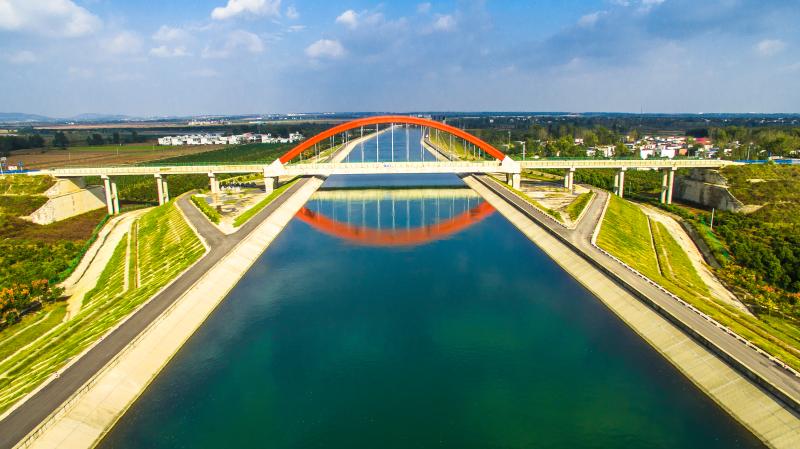China's Ministry of Water Resources reported on Sept. 13 that more than 20 billion cubic meters of water has been diverted in the first phase of the eastern and central routes of the South-to-North Water Diversion Project.

As the amount of water supply increased, the two routes have become lifelines for Beijing, Tianjin, and cities in Hebei, Henan and Shandong provinces. The number of people benefiting directly from the project has surpassed 100 million, while other positive effects of the project gradually emerged.
Since the opening of the eastern and central routes, the Ministry of Water Resources has been working closely with various central and regional government bodies to flesh out water diversion schedules and establish coordination mechanisms. The South-to-North Water Diversion Office of the State Council (which was merged into the Ministry of Water Resources in March 2018) continually strengthened production safety and standardized operation and management protocols. The first phase of the central route project continuously provided safe water supply for 1,371 days, transferring 16.93 billion cubic meters of water, and supplying 15.857 billion cubic meters of water to Beijing, Tianjin, and Hebei and Henan provinces. Among the sum, 3.875 billion cubic meters came to Beijing, 3.157 billion cubic meters reached Tianjin, 5.897 billion cubic meters was diverted to Henan province, and 2.926 billion cubic meters was supplied to Hebei province. On a yearly basis, 4.515 billion cubic meters was diverted in 2016-17 and 5.76 billion cubic meters were supplied in the first 10 months during 2017-18, which exceeded the annual quota ahead of schedule. On the other hand, the eastern route has transferred 3.067 billion cubic meters of water to Shandong province. Among them, 889 million cubic meters of water was transferred in 2016-17 and 1.088 billion cubic meters of water was transferred in 2017-18, marking an increase of 22 percent over the previous year.
It took 623 days for the central route project to divert 5 billion cubic meters of water from completion of the project; 406 days passed from the 5 billion cubic meter-mark to the 10 billion cubic meter-mark; and the project needed only another 257 days to reach the 15 billion cubic meter-milestone. The project efficiency gradually improved, and the pace of water diversion continued to quicken.
The water quality of the first phase of the central route project maintained at Level II or better, only ensuring the safe drinking water, but also fundamentally changing the distribution of water supply in the northern regions. Thanks to the project, water quality vastly improved, and residents at the receiving end even reported better taste in their drinking water.
The first phase of the eastern and central route projects also support green development along the water diversion routes and at the water source. According to estimations, the projects increased the annual industrial and agricultural output value by nearly 100 billion yuan in cities receiving diverted water. They alleviated water shortage in Beijing, Tianjin, Zhengzhou, Shijiazhuang, Jinan and other large- and medium-sized northern cities, thus creating opportunities and space for economic restructuring and industrial transformation. At the same time, the projects also boosted economic development and industrial restructuring of areas at the water source, such as Shiyan city in Hubei province, located at the source of the central route. In the past five years, the average GDP growth rate of Shiyan reached 9 percent, exceeding the national average.
The first phase of the projects also improved and restored water ecology and environment. They significantly improved water source conditions in areas along the routes. Over-exploitation of groundwater was curbed, water usage for ecological and environmental protection increased, and the ecology in the rivers was improved. Through optimized operations, the projects helped to implement water replenishment in flood season for two consecutive years, accumulatively replenishing 1.16 billion cubic meters. Over the past three years, six provinces and cities including Beijing and Tianjin reduced groundwater extraction by almost 800 million cubic meters. The groundwater level in Beijing rose by 0.52 meters and 0.23 meters in 2016 and 2017, respectively. In Tianjin, the ecology in the Haihe River improved notably, and the city's groundwater remained at a stable level, rising slightly.